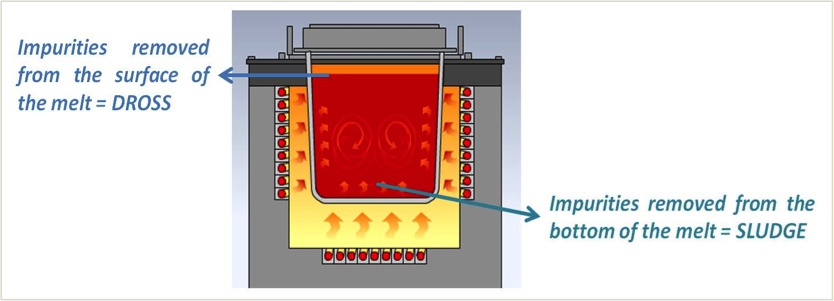Magnesium is a highly recyclable material from the energy point of view; compared to primary metal production only 5% of the energy is required. But, achieving proper quality involves different techniques depending on particles and/or compounds present on recovered parts as for example the use of fluxes for oxide elimination.
Working with molten magnesium implies generation of dross and sludge. Particles present in ingots and also compounds formed during the melting of magnesium alloys are collected at the surface of the melt, which is called dross, or removed from the bottom of the furnace when they sink, which is named sludge.
The amount of sludge in general is significantly lower than the amount of dross. As a reference, distribution of dross and sludge is given by: in the melting furnace 92% dross, 2-3% sludge and in the casting furnace 5% dross.
Therefore, to define the recycling process the first step is to characterise the input material in order to know its quality and the potential of magnesium recovery. In REMAGHIC project a metallurgical analysis of the scraps and scum of the two alloys employed in GA has been done.
To determine the composition of the different samples, the technique used was the emission spectroscopy (OES). And the evaluation of presence of intermetallic and inclusions in the waste material was carried out using SEM/EDX microscopy and SSE techniques (single spark evaluation).


Recent Comments